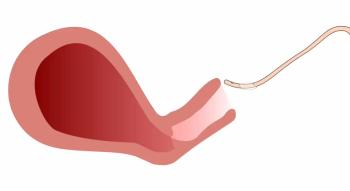Key takeaways:
- A randomized controlled trial found that self-administered hypnosis significantly reduced hot flash frequency and severity compared with a sham white-noise control.
- Participants in the hypnosis group saw a 53.4% reduction in hot flash scores at week 6 and 60.9% by week 12—both higher than reductions in the sham group.
- Moderate hot flashes and daily interference scores improved more substantially with hypnosis, indicating broader quality-of-life benefits.
- Only mild adverse events occurred in both groups, supporting hypnosis as a safe nonhormonal treatment option.
- Findings add to growing evidence for nonhormonal therapies for vasomotor symptoms, alongside emerging options such as elinzanetant.
Hot flash reductions are significantly greater from self-administered hypnosis vs self-administered sham white noise hypnosis, according to a recent study published in JAMA Network Open.
Hot flashes during the menopause transition and beyond are reported in up to 80% of women, often causing discomfort, anxiety, sleep interference, and other outcomes that adversely impact quality of life. Clinical hypnosis has been highlighted as a nonhormonal method of treatment, with data indicating efficacy against irritable bowel syndrome and chronic pain.
“However, to our knowledge, no prior study has examined self-administered hypnosis for hot flashes,” wrote investigators.
Study purpose and criteria
The randomized controlled trial was conducted to determine the efficacy of self-administered hypnosis against hot flashes in menopausal women. Recruitment was performed between March 4, 2019, and February 6, 2024. During the intervention visit, a telephone contact was performed once per week for 5 weeks, then once before the week 12 follow-up.
Eligibility criteria included reporting at least 4 hot flashes per day or at least 28 per week at baseline. Patients with current hypnosis use, simultaneous vasomotor symptom treatment, stage 4 breast cancer, or recent severe psychological illness were excluded from the analysis.
Participants were randomized to undergo either self-administered hypnosis or self-administered sham hypnosis, with investigators blinded to the randomization outcomes. Those in the hypnosis group received educational material about using the intervention for hot flashes, then listened to audio-recorded hypnosis sessions 20 minutes per day for 6 weeks.
Hypnosis methods
Hypnotic relaxation induction and mental imagery for coolness were included in the audio recordings. Educational material was also provided to patients in the sham control group, but the recordings for these participants were of white noise labeled as hypnosis. Controls listened to these recordings for a time matched to the intervention group between weeks 2 and 6.
Records in a Hot Flash Daily Diary completed by participants were assessed as the primary outcome. This included both the frequency and severity of hot flashes, as each hot flash episode was recorded by participants every day for a week. Severity levels included mild, moderate, severe, and very severe.
Secondary outcomes included hot flash activity interference measured using the Hot Flash Related Daily Interference Scale (HFRDIS) and the perception of benefit measured on a 7-point scale. Changed in hot flash from baseline ranged from “very much better” to “very much worse.” Adverse events were also reported.
Greater reductions achieved with hypnosis
There were 250 participants aged a mean 55.9 years included in the final analysis, 2.8% of whom were Asian, 15.7% Black, 6% Hispanic, 0.4% Pacific Islander, 75.1% White, and 5.2% other race or ethnicity. Self-administered hypnosis was performed by 50.4% and sham hypnosis by 49.6%. Mild adverse events were reported in 3.2% and 4%, respectively.
While both groups reported a decline in mean hot flash scores, the reduction was significantly greater in the hypnosis group vs the sham group. Scores in the hypnosis group included:
- 88.7 at baseline
- 41.3 at week 6
- 34.7 at follow-up
In the sham group, these scores were 94.7, 55.9, and 52.8, respectively. This indicated a reduction of 53.4% at week 6 in the hypnosis group vs 40.9% in the sham hypnosis group. At week 12, these reductions were 60.9% and 44.2%, respectively.
Improvements in interference and quality of life
All types of hot flashes decreased in both groups, though greater reductions were reported for moderate hot flashes, with means of 21.6 and 20.9 at baseline and 8 and 12.5 at week 6 for the hypnosis and sham groups, respectively. At week 12, the rate was 7.8 in the hypnosis group but did not decline further in the sham group.
Mean HFRDIS scores also had a greater reduction in the hypnosis group, at 49.3, 25, and 21.4 at baseline, week 6, and week 12, respectively. In the sham group, these scores were 47.3, 29.6, and 24.2, respectively. Overall, the results indicated greater reductions in hot flash frequency and interference from hypnosis vs sham hypnosis.
“These findings demonstrate that remote delivery of a hypnosis intervention for hot flashes is a safe and effective option for women experiencing hot flashes,” wrote investigators.
Expanding nonhormonal options
This methods odds to the growing body of nonhormonal options available to treat vasomotor symptoms in postmenopausal patients. Among these options includes elinzanetant, the safety of which was recently discussed by James A. Simon, MD, CCD, MSCP, IF, FACO, professor at George Washington University, at The Menopause Society Annual Meeting.
According to Simon, the favorable safety profile of elinzanetant was observed over a 1-year treatment period. There were no adverse impacts on liver function detected, and most common treatment-emergent events were mild and not linked to the study drug. Additionally, a significant impact toward treatingvasomotor symptoms was reported.
“Just intervening on the issue of hot flashes and night sweats is not just about hot flashes and night sweats,” said Simon. “There are lots of downstream benefits to a given woman by just helping her get a good night’s sleep that’s free of night sweats, and helping her not to sweat through her business meeting when she’s trying to close the deal.”
















